1.10:45-45-90 Triángulos Rectos
- Page ID
- 107698
Los tiempos de pierna\(\sqrt{2}\) son iguales a hipotenusa
45-45-90 Triángulos Recto
Un triángulo rectángulo con patas congruentes y ángulos agudos es un triángulo rectángulo isósceles. Este triángulo también se llama triángulo 45-45-90 (llamado así por las medidas del ángulo).
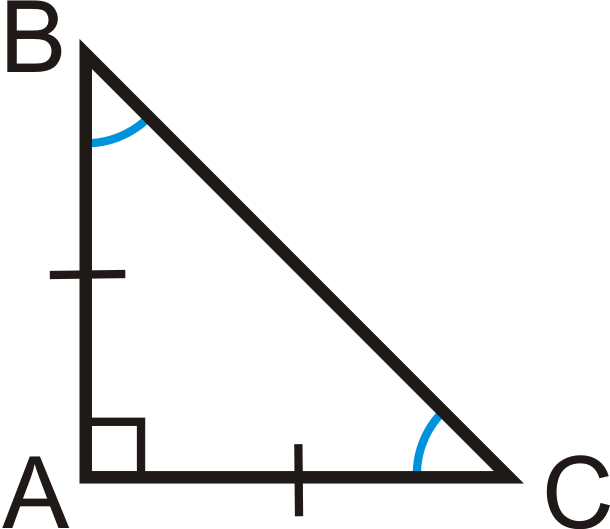
\(\Delta ABC\)es un triángulo rectángulo con\(m\angle A=90^{\circ}\),\(\overline{AB} \cong \overline{AC}\) y\(m\angle B=m\angle C=45^{\circ}\).
45-45-90 Teorema: Si un triángulo rectángulo es isósceles, entonces sus lados están en la proporción\(x:x:x\sqrt{2}\). Para cualquier triángulo rectángulo isósceles, las piernas son\(x\) y la hipotenusa es siempre\(x\sqrt{2}\).
¿Y si te dieran un triángulo rectángulo isósceles y la longitud de uno de sus lados? ¿Cómo pudiste averiguar las longitudes de sus otros lados?
Encuentra la longitud de\(x\).
Solución
Usa la\(x:x:x\sqrt{2}\) relación.
Aquí, se nos da la hipotenusa. Resolver para\(x\) en la proporción.
\(\begin{aligned} x\sqrt{2} =16\\ x=16\sqrt{2}\cdot \dfrac{\sqrt{2}}{\sqrt{2}}=\dfrac{16\sqrt{2}}{2}=8\sqrt{2} \end{aligned}\)
Encuentra la longitud de\(x\), donde\(x\) esta la hipotenusa de un triángulo 45-45-90 con longitudes de pierna de\(5\sqrt{3}\).
Solución
Usa la\(x:x:x\sqrt{2}\) relación.
\(x=5\sqrt{3}\cdot\sqrt{2}=5\sqrt{6}\)
Encuentra la longitud del lado faltante.
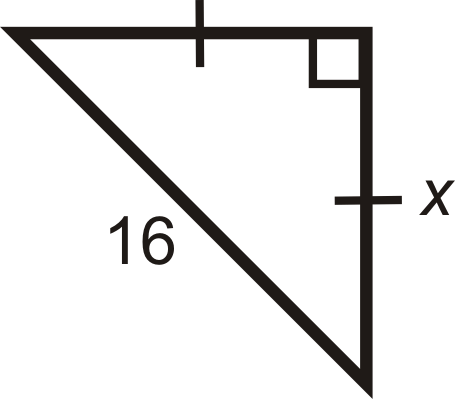
Solución
Usa la\(x:x:x\sqrt{2}\) relación. \(TV=6\)porque es igual a\(ST\). Entonces,\(SV=6 \cdot \sqrt{2}=6\sqrt{2}\).
Encuentra la longitud del lado faltante.
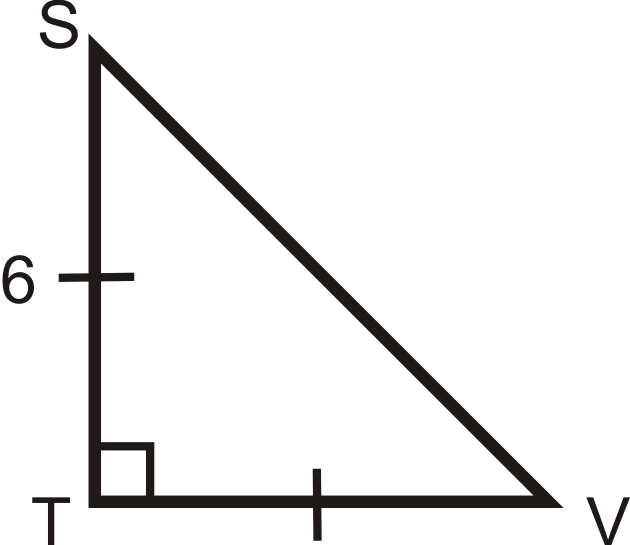
Solución
Usa la\(x:x:x\sqrt{2}\) relación. \(AB=9\sqrt{2}\)porque es igual a\(AC\). Entonces,\(BC=9\sqrt{2}\cdot\sqrt{2}=9\cdot 2=18\).
Un cuadrado tiene una diagonal con longitud 10, ¿cuáles son las longitudes de los lados?
Solución
Dibuja un cuadro.
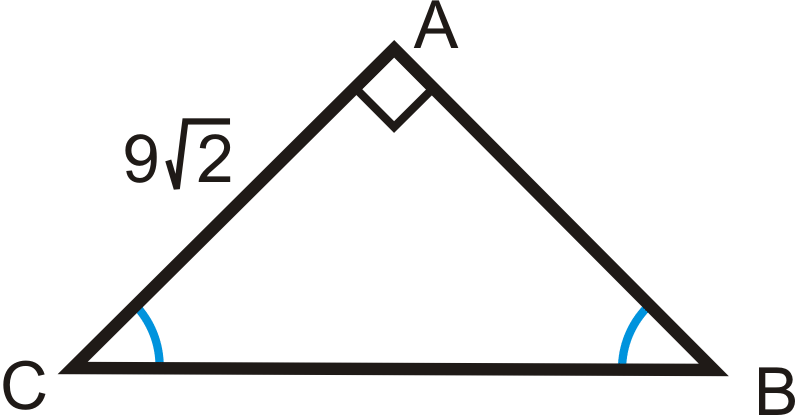
Sabemos que la mitad de un cuadrado es un triángulo 45-45-90, entonces\(10=s\sqrt{2}\).
\(\begin{aligned} s\sqrt{2}&=10 \\ s&=10\sqrt{2}\cdot \dfrac{\sqrt{2}}{\sqrt{2}}=\dfrac{10\sqrt{2}}{2}=5\sqrt{2} \end{aligned}\)
Revisar
- En un triángulo rectángulo isósceles, si una pierna es 4, entonces la hipotenusa es __________.
- En un triángulo rectángulo isósceles, si una pata es x, entonces la hipotenusa es __________.
- Un cuadrado tiene lados de longitud 15. ¿Cuál es la longitud de la diagonal?
- La diagonal de un cuadrado es 22. ¿Cuál es la longitud de cada lado?
Para las preguntas 5-11, encuentra los largos de los lados faltantes. Simplifica todos los radicales.
-
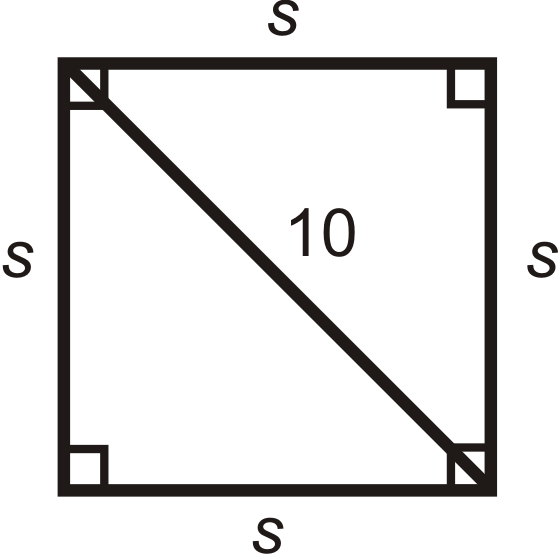
Figura\(\PageIndex{5}\) -
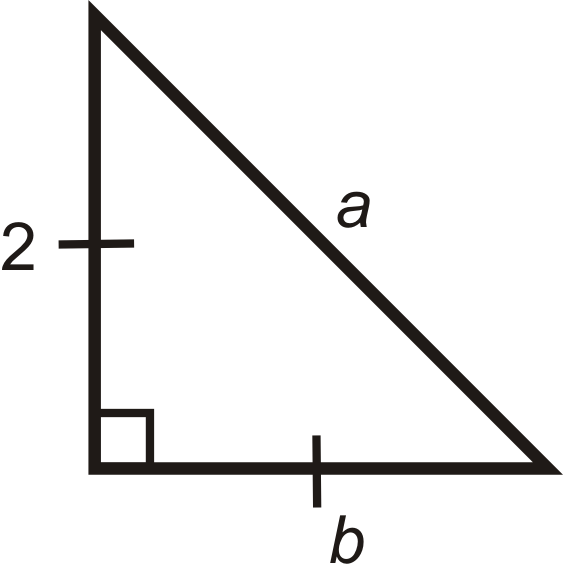
Figura\(\PageIndex{6}\) -
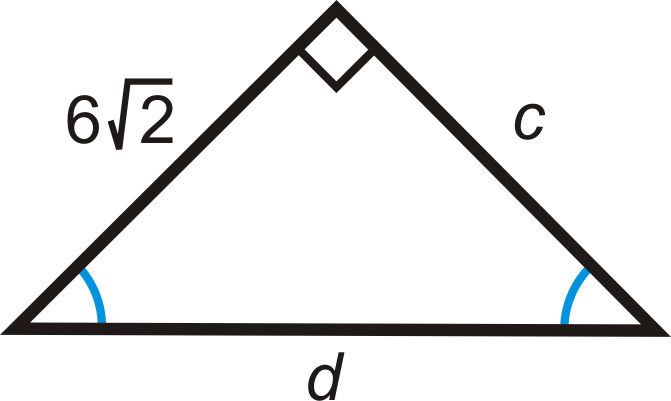
Figura\(\PageIndex{7}\) -
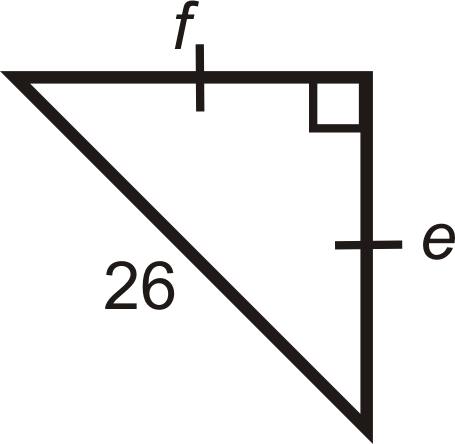
Figura\(\PageIndex{8}\) -
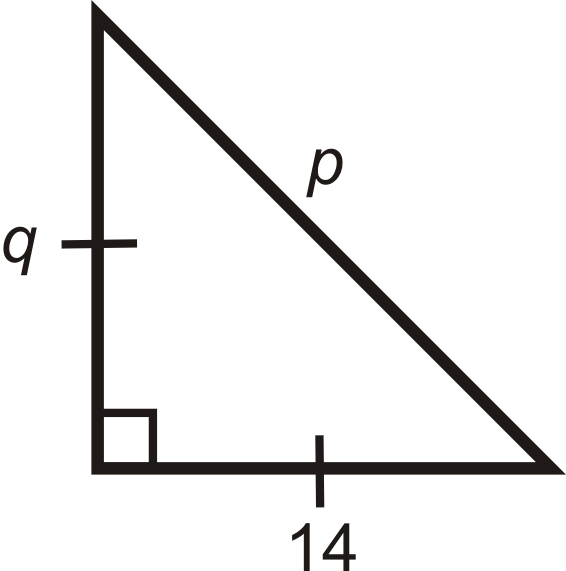
Figura\(\PageIndex{9}\) -
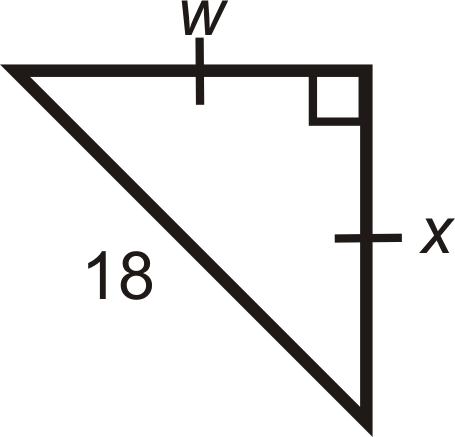
Figura\(\PageIndex{10}\) -
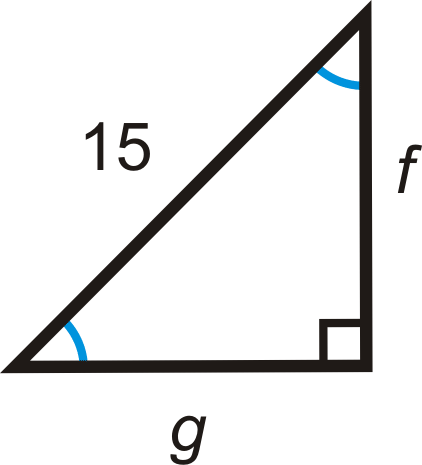
Figura\(\PageIndex{11}\)
Reseña (Respuestas)
Para ver las respuestas de Revisar, abra este archivo PDF y busque la sección 8.5.
Recursos
vocabulario
| Término | Definición |
|---|---|
| Teorema 45-90 | Para cualquier triángulo rectángulo isósceles, si las patas son x unidades de largo, la hipotenusa es siempre\(x\sqrt{2}\). |
| 45-45-90 Triángulo | Un triángulo 45-45-90 es un triángulo rectángulo especial con ángulos de\(45^{\circ}\),\(45^{\circ}\), y\(90^{\circ}\). |
| Hipotenusa | La hipotenusa de un triángulo rectángulo es el lado más largo del triángulo rectángulo. Está frente al ángulo recto. |
| Patas de un Triángulo Recto | Las patas de un triángulo rectángulo son los dos lados más cortos del triángulo rectángulo. Las patas están adyacentes al ángulo recto. |
| Radical | El signo √, o raíz cuadrada. |
Recursos adicionales
Video: Resolviendo triángulos rectos especiales
Actividades: 45-45-90 Triángulos Rectos Preguntas de Discusión
Ayudas de estudio: Guía de estudio de triángulos rectos especiales
Práctica: 45-45-90 Triángulos Rectos
Mundo real: Combatiendo la guerra contra las drogas usando geometría y triángulos especiales

